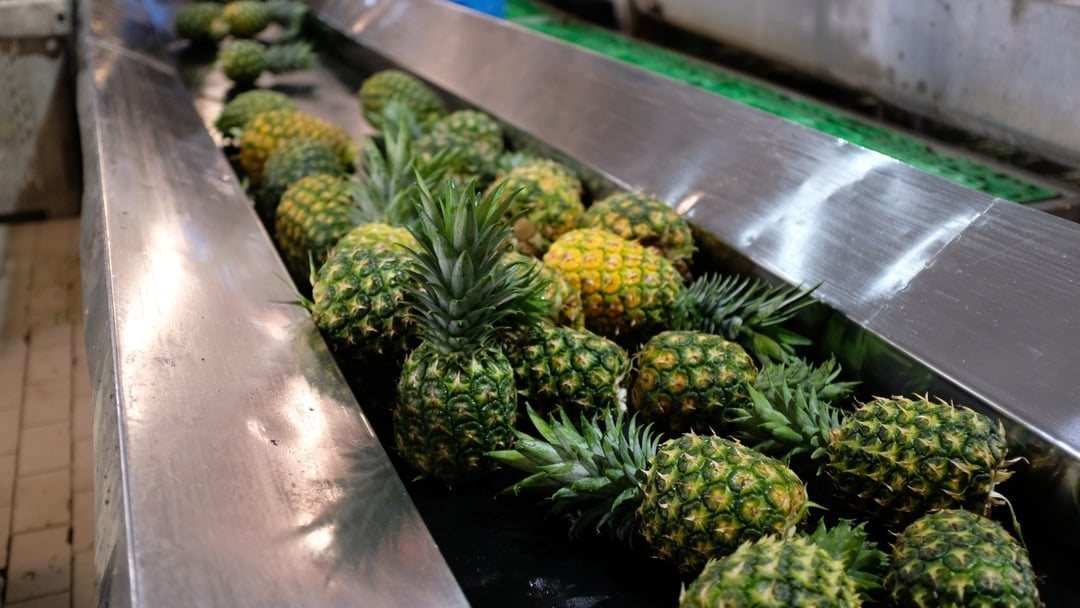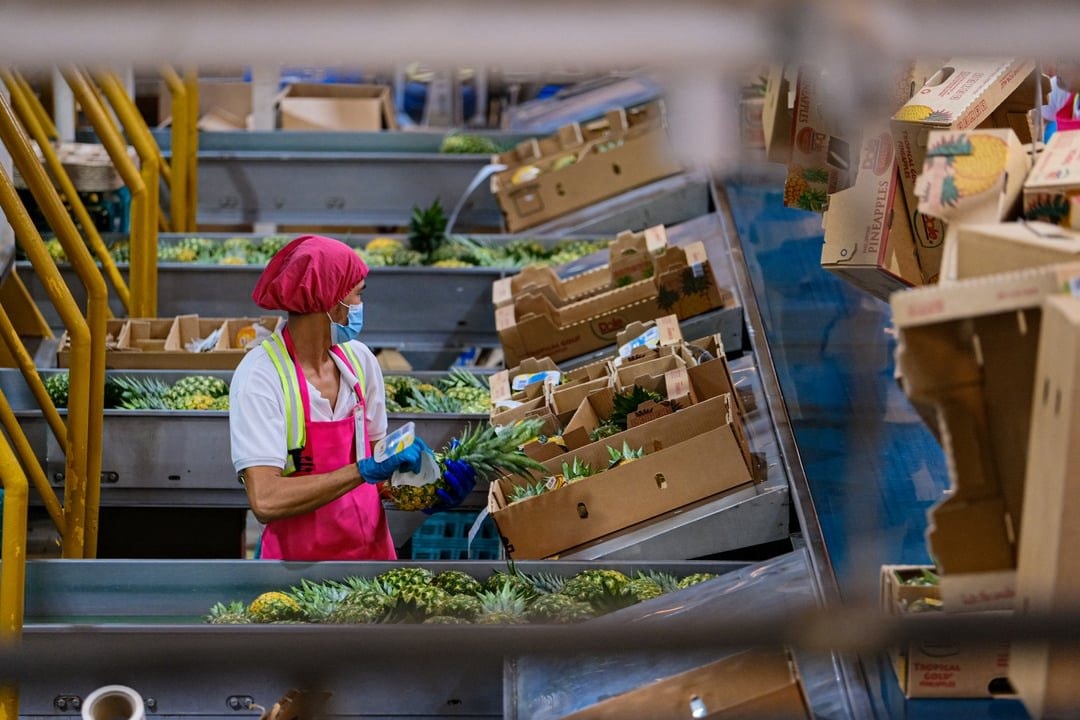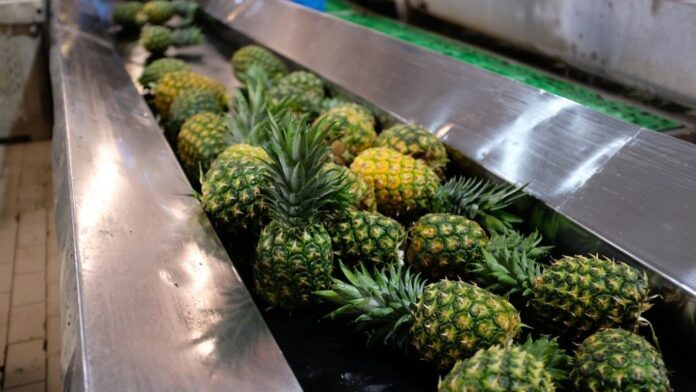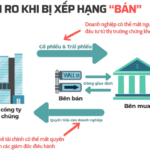Pineapple is a tropical fruit that holds immense significance in Vietnam’s agricultural landscape.
As of May 2025, the Vietnamese pineapple industry’s largest market was the Russian Federation, raking in 9.4 million USD. The US market followed closely, standing at 7.2 million USD, accounting for 20.9% of Vietnam’s pineapple exports.
Mr. Dang Phuc Nguyen, Secretary-General of the Vietnam Fruit and Vegetable Association, asserted that the global pineapple market presents vast opportunities, underpinned by robust consumer demand. Presently, suppliers are struggling to keep up with the skyrocketing demand, leading to shortages in certain areas.
According to data from the Ministry of Agriculture and Environment, Vietnam’s pineapple cultivation area spans approximately 52,000 hectares, with 48,000 hectares already in the harvest phase. The average yield stands at 184.1 tons per hectare, resulting in an annual production of over 860,000 tons.
Vietnam has set ambitious goals for its pineapple industry, targeting a cultivation area of 55,000–60,000 hectares by 2030 and aiming for a production volume of 800,000–950,000 tons.

Vietnamese pineapples are now exported to over 100 countries and territories worldwide. Photo: QC
The key pineapple-producing provinces in Vietnam include Ninh Binh, Thanh Hoa, Quang Nam, Tien Giang, and Kien Giang. Notably, the production structure is shifting towards staggered planting to ensure a year-round supply, catering to both industrial processing and fresh consumption during the off-season (from November to March of the following year). Currently, Vietnam’s off-season pineapple cultivation accounts for 30%-40% of the total cultivation area.
Vietnamese Pineapple Industry: Poised for a Breakthrough
The Ministry of Agriculture and Environment reports that Vietnamese pineapples are now exported to over 100 countries and territories worldwide.
Research organizations estimate that the global pineapple market will reach a size of $28.79 billion in 2024 and is projected to expand at a CAGR of 6.33% to hit $39.13 billion by 2029. Europe and North America collectively account for approximately 50% of the global pineapple consumption. Currently, the top three pineapple exporters are Costa Rica, Indonesia, and the Philippines.
Despite Vietnam’s advantageous natural conditions, competitive production costs, and robust processing capabilities, the domestic pineapple industry faces several challenges. These include a limited variety of pineapple cultivars, a lack of high-quality, disease-resistant varieties, fragmented value chain linkages, insufficient areas of standard raw material production, low deep processing ratio, and inadequate brand development and market promotion efforts.

The Vietnamese pineapple industry faces several challenges to achieve its breakthrough. Photo: QC
Mr. Dang Phuc Nguyen suggested that the Vietnamese pineapple industry needs a clear strategy encompassing raw material expansion, varietal improvement, technical applications, and irrigation system development. He also emphasized the importance of preferential credit policies from the government, considering the high initial investment costs of approximately VND 120-130 million per hectare.
Meanwhile, ThS Ngo Quoc Tuan from the Department of Crop Production and Plant Protection noted that while Vietnam has exported to 122 countries, there is a need to open technical files for new markets. He highlighted the potential of the EU market, especially with the advantages offered by the EVFTA agreement.
Mr. Nguyen Quy Duong, Deputy Director of the Department of Crop Production and Plant Protection, shared that the planning target for 2030 aims for a pineapple cultivation area of 60,000 hectares in Vietnam. Given the surging demand, adjustments to the planning are necessary, with a particular focus on the Chinese market, which boasts a massive consumption capacity.
At the seminar “Connecting Production and Consumption of Agricultural Products in the North Central Region” held on August 6, Dr. Dinh Cao Khue, Chairman and CEO of DOVECO, emphasized the vast potential of the Vietnamese pineapple industry. He underscored that pineapples offer superior economic efficiency compared to traditional crops as they can be grown year-round, unlike mangoes, oranges, and litchis, which are seasonal. This advantage significantly benefits production and export organization. Dr. Khue highlighted that with proper planning, pineapples could become the spearhead in elevating the agricultural value of the North Central Region.
The seminar “Connecting Production and Consumption of Agricultural Products in the North Central Region” was organized by the Newspaper of Agriculture and Environment in collaboration with the Vietnam Gardening Association, the Department of Quality Management, Processing and Market Development, the Department of Crop Production and Plant Protection, and the Department of Agriculture and Environment of Nghe An province.
“Harvesting MD2 Pineapple Varieties Can Yield Up to $300,000 per Hectare”
The North Central region of Vietnam, though harsh, boasts a favorable climate for cultivating pineapples, tea, and citrus fruits. While citrus crops are dwindling due to diseases, and tea struggles to increase its revenue, pineapple cultivation is experiencing a rapid expansion. The drought-tolerant pineapple, particularly the MD2 variety, offers exceptional quality and profitability, with potential profits exceeding 700 million VND per hectare, significantly outperforming other crops.





































